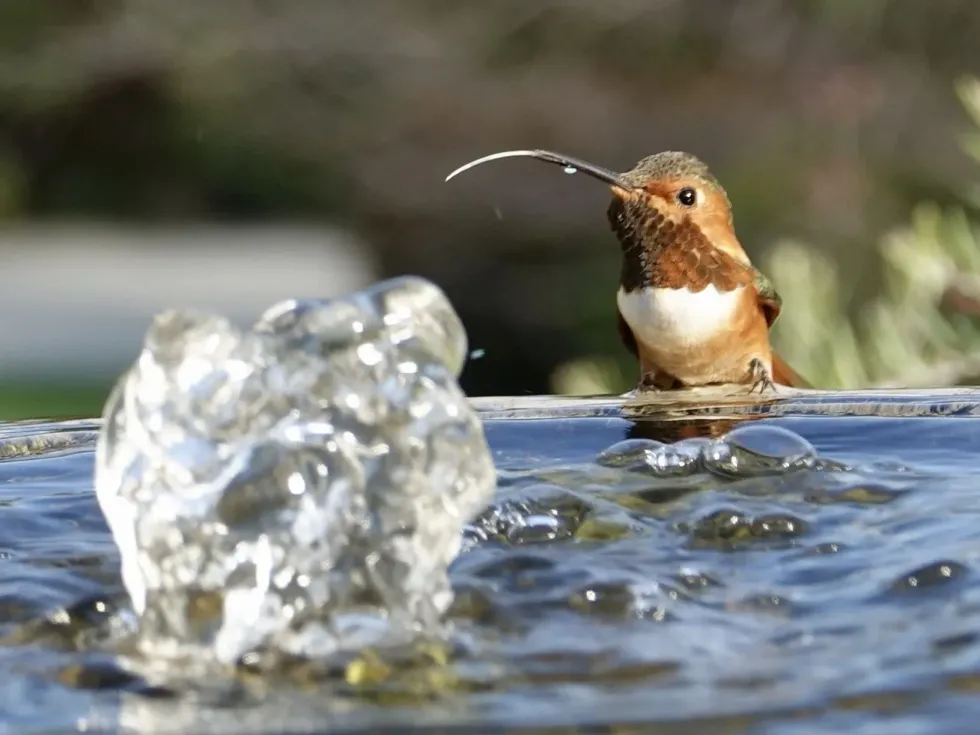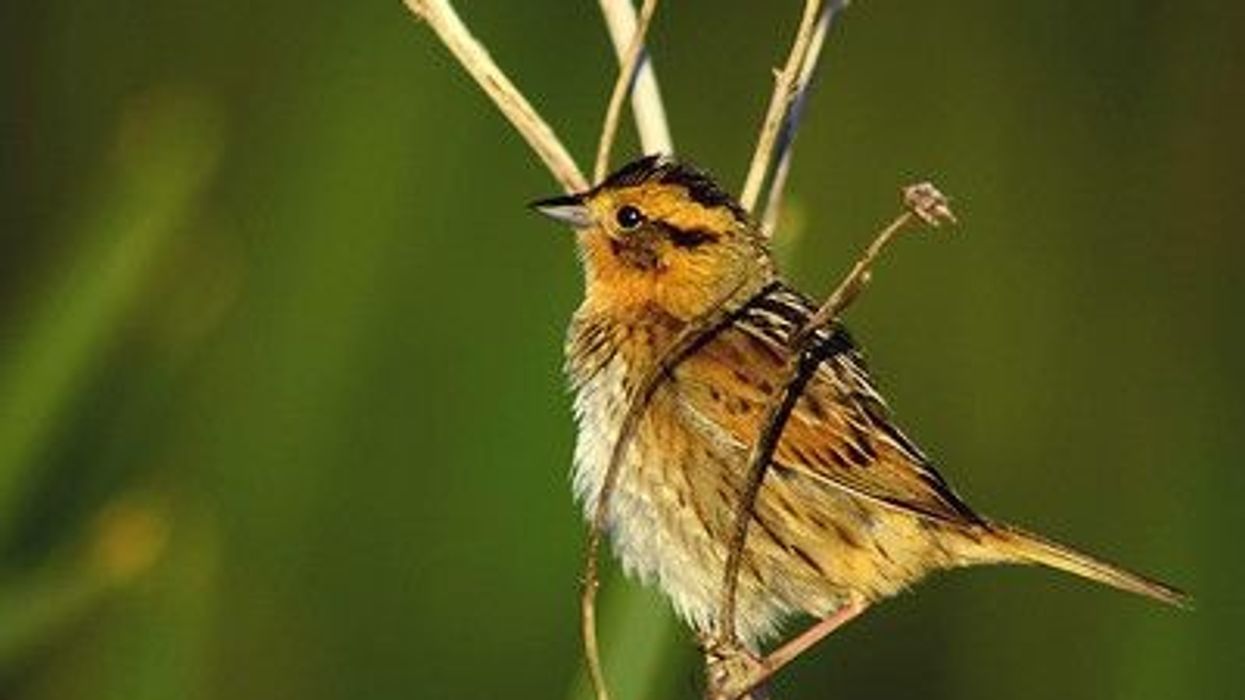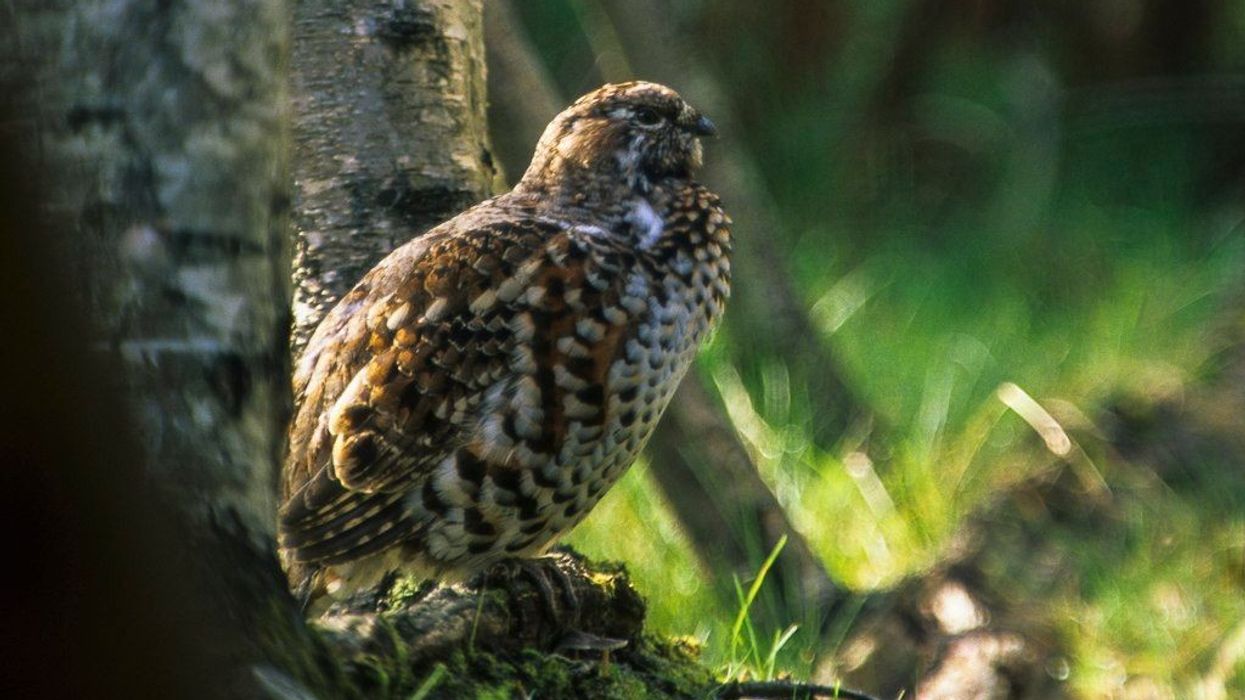The Allen's hummingbird is a species of hummingbird that is commonly found in Southern California and the Pacific Coast. The males of this species have a greenback with an iridescent orangish throat and rufous-colored tail feathers. The females and immature Allen's hummingbird are pretty similar to them, except for the difference in their throat patch.
Their breeding season range between December and early spring. They nest in coastal areas, woods, forests, or meadows. These tiny birds are quick fliers.
Read on to discover these interesting facts; if you like these, do read our sword-billed hummingbird and white-throated hummingbird facts too.
Allen's Hummingbird Interesting Facts
What type of animal is an Allen's hummingbird?
Allen's hummingbird is a species of North American bird, mainly found in California, that has a greenback and forehead with a rufous colored rump and tail. The male Allen's hummingbird has an iridescent orange-red throat, whereas the females and immature Allen's hummingbird are almost similar to them except for the throat patch.
What class of animal does an Allen's hummingbird belong to?
The Allen's hummingbird species belongs to the Aves class and is a species of (S. sasin) found on the Channel Islands National Park and Coastal Scrub of California.
How many Allen's hummingbirds are there in the world?
There is no such estimate of the total number of Allen's hummingbirds in the world, but this species of bird is present in huge numbers in the world as their conservation status is stated to be of Least Concern which implies that there is no immediate danger to their population.
Where does an Allen's hummingbird live?
The Allen's hummingbird is commonly found breeding in a narrow strip of the coastal forest in Southern California, along the Pacific Coast, and the scrub of Santa Barbara.
What is an Allen's hummingbird's habitat?
The habitat of Allen's hummingbirds includes the narrow strip of coastal areas, brushy woods, lowland forests, gardens, and meadows. They prefer to nest from sea level to an altitude of somewhere around 1,000 ft (304.8 m) along the west coast.
The male Allen's hummingbird prefers to occupy more open-area territories while females prefer to make a nest in tree cover areas.
Who does an Allen's hummingbird live with?
Both adult male and female hummingbird species prefer to stay solitary in all aspects of life. They neither live nor move in herds, and there is no pair-bonding for this species of bird.
How long does an Allen's hummingbird live?
The Allen's hummingbird lifespan is estimated to be somewhere around 5-10 years. However, as with other creatures involved, the survival rate of these birds can be threatened by other animals, predators, or deforestation.
How do they reproduce?
The Allen's hummingbird breeding season starts in early December. The adult male Allen's hummingbird produces a buzzy sound to attract the females, and they also make a pose and produce whistle and rattle sounds from their tail feathers and voice to initiate the breeding process.
After the courting, the males follow the female hummingbird near his feeding territory to begin the copulation process.
The female lays two oval-shaped white eggs and is entirely responsible for making nests and raising chicks. She incubates the eggs until hatching for about 16-22 days.
What is their conservation status?
Allen's hummingbirds are the bird species of Southern California that have the conservation status of Least Concern in their natural habitat.
Allen's Hummingbird Fun Facts
What does an Allen's hummingbird look like?
Allen's hummingbirds are orangish-green in color. Adults have a coppery tail, eye fix, and stomach that stands out from their bronze green-back and profound ruddy orange gorget. Female and immatures have bronze-green tops with paler coppery sides.
Males have a sparkling orangish-red throat, but the females and the chicks lack this throat. The tail feathers of both the birds are almost similar, bearing a rufous color. The Allen's hummingbird is so similar to the rufous hummingbird that it is extremely difficult to distinguish the two.
How cute are they?
The Allen's hummingbird is very cute and adorable just like lovebirds, and the vibrant color combination makes Allen's hummingbirds even more attractive.
How do they communicate?
Allen's hummingbirds communicate with each other primarily through vocalizations.
How big is an Allen's hummingbird?
The Allen's hummingbird (Selasphorus sasin) is a very small species in terms of height or length. The height of adult males ranges between 3-3.5 in (7.6-8.9 cm), which is a bit bigger than the height of an average hummingbird, which ranges between 3-5 in (7.6–12.7 cm).
How fast can an Allen's hummingbird fly?
Allen's hummingbirds fly very quickly, regularly accomplishing paces of 20-30 mph (32-48.2 kph). In fact, the courtship flight of a male hummingbird is a high-speed back and forth flight arc of about 25 ft (7.6 m), succeeded by a high-velocity dive from about 100 ft (30.48 m), producing a high flutter sound to attract the female bird.
Their speed is almost equal to that of rufous hummingbirds.
How much does an Allen's hummingbird weigh?
Normally, the weight of an Allen's hummingbird falls in the range of 0.1 oz (2.8 g), but it also matters on the amount of food available to them in their breeding grounds. Therefore, their weight is roughly equal to the weight of rufous hummingbirds.
What are the male and female names of the species?
The male and female birds of Allen's hummingbirds' breed don't have different names.
What would you call a baby Allen's hummingbird?
The baby of Allen's hummingbirds' breed is referred to as a chick.
What do they eat?
An adult male Allen's hummingbird feeds on small insects like worms, as well as tree sap, and flower nectar.
Are they dangerous?
They are not dangerous, but they are very territorial. They are known to drive away even birds several times larger than their size to mark and defend their territories.
Would they make a good pet?
It is illegal to keep hummingbirds as a pet. They are also protected under the Migratory Bird Treaty Act of 1918. Unless you have a special permit, you are not allowed to trap or keep a hummingbird or her egg.
Did you know...
Read these five interesting facts:
Male and female Allen's hummingbirds use different habitats during the breeding season. The male sets up a territory overseeing open areas of coastal scrub or chaparral from where he can look over his territory.
Esmeralda's woodstar is the rarest hummingbird.
Generally, white hummingbirds are extremely rare.
Hummingbirds are able to recognize humans. They are the smallest migratory birds.
The Allen's hummingbird is the only bird that can fly both forward and backward. They don't have any sense of smell.
The bird guide to identify a hummingbird includes a keen observance of their color, size, sound, and behavior because they have unique colors, small size, sharp sound, and social behavior.
Where do we find the most beautiful hummingbirds around the world?
The most beautiful hummingbirds can be found in different parts of America.
What time of year do hummingbirds lay eggs?
Female Allen's hummingbirds make their nest alone without any help from male Allen's. The female usually starts building her nest before mating but completely finishes it only after copulation has occurred. She is answerable for developing the nest and raising the chicks.
The breeding season runs from October through early June. The female forms the nest, sits on the eggs, and raises the chicks with no help from the male. A female hummingbird has four or five broods a season.
Here at Kidadl, we have carefully created lots of interesting family-friendly animal facts for everyone to discover! For more relatable content, check out these radjah shelduck facts and yellow warbler facts for kids.
You can even occupy yourself at home by coloring in one of our free printable Allen's hummingbird coloring pages.










